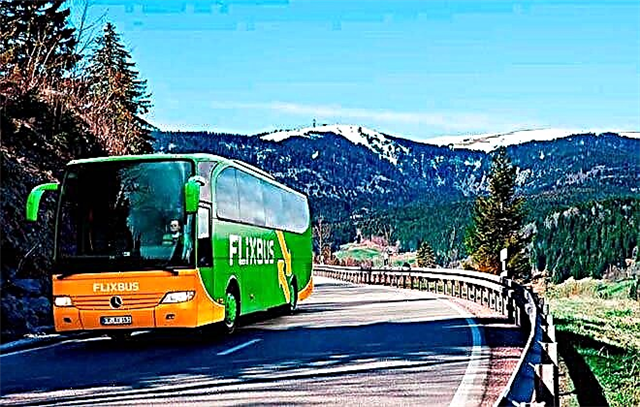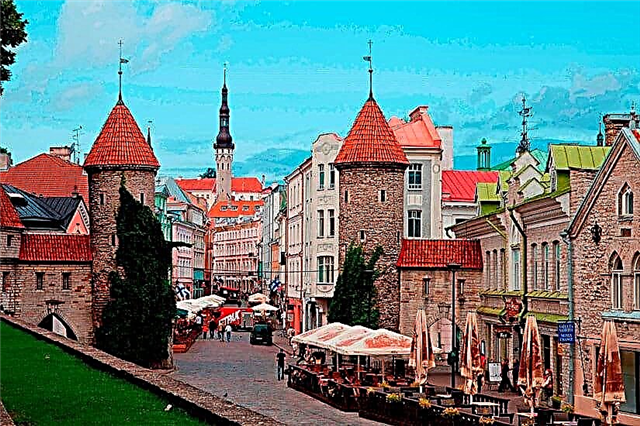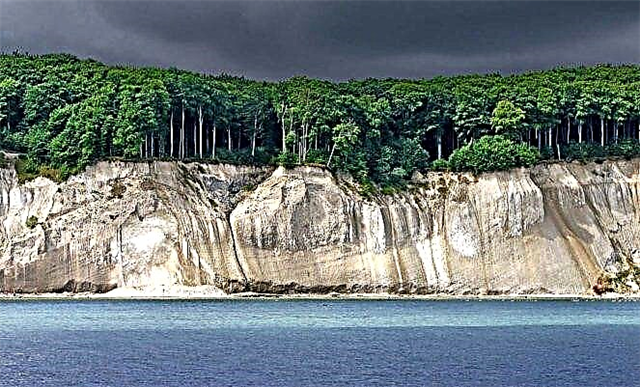For two centuries, the island of Rügen has been considered one of the most attractive resorts in Germany. Chalk cliffs, gorgeous beaches, graceful villas, grandiose buildings from the Third Reich, a retro train - this is not a complete list of the island's attractions that attract hundreds of thousands of tourists and vacationers from all over Europe.
Historical information and origin of the name
A large island off the coast of Germany was inhabited in the Stone Age, and then the Polabian Slavs settled on it for a long time. The name of the island is considered to be derived from the Rugi or Ruyan tribe. Historians sometimes call it the prototype of the folklore island Buyan.
The inhabitants of this piece of land had a powerful fleet and a strong army, for a long time neighboring tribes paid tribute to the Ruyans, but in the XII century this rule came to an end: the Ruyan state was defeated, and they themselves became vassals first of the Danish king, and then passed under German rule.
Over time, the local Slavs lost their traditions, language and became Germanized. For many years, fishing villages became the only settlements on Rügen. But at the beginning of the 19th century, the local prince decided to establish a resort here, which began to develop rapidly and soon became a popular holiday destination, which remains to this day.
Towns and villages of Rügen
Today, the locals on the island consider themselves to be native Germans, residents of Mecklenburg-Vorpommern.
The island territory is divided into four districts, which includes 45 communities - towns and cities, among which the largest are Bergen an der Rügen, Sassnitz, Putbus, Harz.
However, the fame of this amazing place was brought not by the cities, but by the resorts. Thus, one of the villages at the end of the 19th century turned into the resort town of Binz, where a resort hall was created, attracting the attention of vacationers.
In the years of the Third Reich, near the village of Prora, a "health factory" was built - the largest resort complex, designed for thousands of people at a time. These and other villages have brought glory to the island and made it popular with tourists.
Economy
The main income to the island comes from tourists and vacationers. The mineral springs of the village of Zagard, discovered in the 18th century, laid the foundation for the health-improving orientation of the resort. Aristocrats came here not only from Germany, but also from other European countries.
Later, when sea bathing became popular, resorts on the Baltic Sea coast began to develop. Until now, hotels, sanatoriums, boarding houses are the main source of budget revenues. Fishing and agriculture are also developed.
The island is connected to the mainland by roads and railways.
In the Stralsund area, a huge bridge, more than 4 km long, has been built, which connects mainland Germany and Rügen.
The port complex Mukran operates in the east, from where cargo and passenger ships leave for Russia, Lithuania, Sweden, Denmark.
Attractions of the island
The beautiful landscape and mild climate, combined with the attractive seaside, are remarkable in themselves. But the island is also famous for its memorable places:
- Jasmund Park, where the chalk mountains and the “Royal Throne” rock are located;
- Arkona is a place inhabited by the ancestors of the Slavs back in the Stone Age, where mounds and sacrificial stones have been preserved;
- two lighthouses: the first was built in the 19th century, the height is 19 m; 100 years later it was built with a second height of 36 m;
- the Furious Roland steam train has been carrying tourists along one route for more than a hundred years, revealing beautiful landscapes to passengers;
- Bergen is one of the major cities located in the center of the island. It is interesting for old buildings, preserved by the church of the 15th century.
Resorts in Rügen
However, first of all, Fr. Rügen is famous for its spas. The conditions of stay on it allow everyone to choose a suitable place to stay.
The first vacationers began to come to Rügen in the 18th century, but the resorts gained popularity in the middle of the 19th century.
The town of Binz is famous for its Kurhaus, which was intended to become an analogue of Brighton in England. At the beginning of the 20th century, up to 10,000 people who belonged to the cream of society gathered here annually. Since then, beautiful castles, villas, cottages, distinguished by originality and beauty, have remained here.
In the 1930s, the largest Nazi sanatoriums in the world were built on the basis of the "Power through Joy" organization, striking in their grandeur. The layout of the complex received the Grand Prix at an exhibition in Paris in 1937. "Health Factory" still exists not only in the photo, but also in real life.
Nowadays, Germany is restoring the image of the resort, which was created over two centuries. Here you can have a great rest, improve your health, get acquainted with historical sights.
How to get to Rügen
The island of Rügen, or rather, the archipelago, which includes other islands, is located in the north of Germany. The easiest route is via Hamburg Airport.
IC trains take 4 hours from Hamburg to Binz, the island's main resort. The ticket price is about 50 euros.
Electric trains run from Stralsund to Binz and Sassnitz. Other towns and villages can only be reached by the local retro train "Furious Roland".
In addition, there are ships and ferries from Stralsund to Altefer in the southwest of the island. Travel time is only 15 minutes.
Many travelers go to Cape Arkona, the northernmost point of the island, where the Slavic sanctuary of Svyatovit is located.
Excavations that are closed to the public are being conducted here. You can get here by car, but the parking is quite far away, you will have to walk to the shore for half an hour.
There is a way to travel by train from Rostock to Lietzow, from there - on foot or by bike. This path will stretch for about 3 hours, but the impressions of visiting Arkona are worth it.
Conclusion
For two centuries Rügen has been attracting not only vacationers, but also tourists, artists, and writers. The island will appeal to fans of unusual landscapes and those who are interested in ancient history, as well as those who just want to relax in a quiet, cozy corner of nature.
Whatever the purpose of visiting the island, a lot of impressions are guaranteed, because Rügen leaves no one indifferent. You will certainly want to return here to touch the unique nature and appreciate the attractiveness of provincial Germany.











